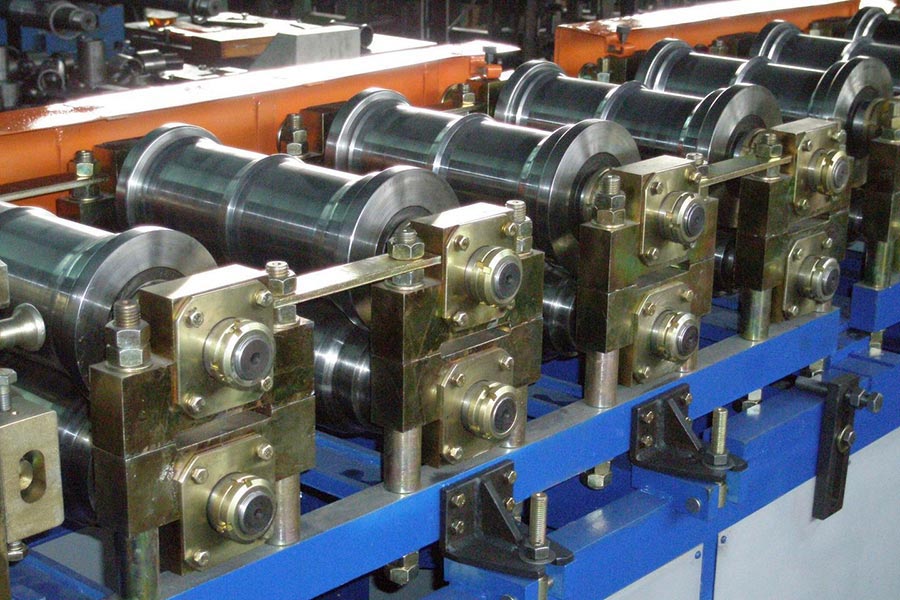
The Russian Federation, with its vast geography and natural resources, is taking important steps towards industrialization. Especially in recent years, geopolitical developments and import substitution policies have accelerated Russia's strategies to strengthen its own industrial production and reduce its dependence on foreign sources. At the heart of this strategy are the metalworking and manufacturing industries, which has great potential for the roll-forming machinery market.
The Current Situation of the Roll Forming Machines Market in Russia
The market for roll forming machines in Russia has traditionally been shaped by the demand of sectors such as construction, automotive, logistics and warehousing. However, recent developments have significantly changed the dynamics of this market:
- Import Substitution Policies: Sanctions from Western countries have pushed Russia to increase domestic production and reduce its dependence on imported products. This necessitates local manufacturers to invest in modern and efficient roll-forming machines. The localization of parts production, especially in strategic sectors such as automotive, directly affects the demand for roll forming machines.
- Increase in Industrial Production: Industrial production in Russia shows a noticeable growth, especially in the manufacturing industry. Increases in areas such as metal products production (excluding machinery and equipment), computer, electronics and optical production expand the usage area of roll forming machines. This growth is also a result of import substitution processes.
- Infrastructure and Construction Projects: Russia is experiencing significant activity in the construction sector due to the fact that it is a large country and continues to invest in infrastructure. Many construction materials such as roof and façade systems, door and window profiles, barriers and support structures are produced with roll forming machines.
- Transformation in the Automotive Industry: The Russian automotive industry is undergoing a significant transformation due to disruptions in global supply chains and the withdrawal of foreign brands. This transformation requires local automakers to increase their own parts production capacity. The production of automotive components such as chassis, seat slides, bumper beams with roll forming technology keeps the demand in this sector alive.
- Strengthening Local Supply Chains: Russia is focusing on strengthening local supply chains in line with its self-sufficiency goals. This, in turn, encourages small and medium-sized enterprises (SMEs) operating in the field of metalworking and manufacturing to invest in modern machinery.
Growth Potential
The growth potential of the roll forming machines market in Russia is directly related to the above-mentioned factors and is supported by several indicators:
- The Need for Continuous Indigenization: As long as Russia's policies of reducing foreign dependency and ensuring self-sufficiency in strategic industries continue, the need to increase domestic production capacity will continue. This will drive the appetite for investment in roll forming machines.
- Demand for Modernization and Automation: Russian industry focuses on modernization and automation processes in order to increase efficiency and reduce costs. Roll forming machines meet this demand by offering solutions that provide high automation and efficiency.
- Adoption of New Technologies: The adoption of newer technologies, such as light steel structure (LSF) systems, further expands the use of roll forming machines. Advantages such as energy efficiency and fast construction are driving interest in LSF technology.
- Export Opportunities: Russian manufacturers target not only the domestic market, but also export markets in nearby geographies such as the CIS countries. Export-oriented production requires producing competitive products in accordance with international quality standards, which increases the importance of roll forming machines.
- Government Incentives and Supports: The Russian government offers various incentives and support programs to support local production and industrialization. These programs make it easier for businesses to access equipment that requires investment, such as roll forming machines.
Challenges and Opportunities
Despite the market's growth potential, there are also some challenges. Difficulties in technology transfer and spare parts supply due to sanctions are an obstacle especially for Western machinery manufacturers. However, this situation creates a great opportunity for alternative suppliers such as Turkish and Chinese machinery manufacturers. It is of great importance for these manufacturers who want to take part in the Russian market to develop solutions that are suitable for local requirements, competitively priced and can provide sustainable service.
Result
The roll forming machinery market in Russia is undergoing a significant transformation under the current geopolitical and economic conditions and exhibits strong growth potential. Import substitution policies, increase in industrial production, and strengthening of local supply chains are the main factors shaping the future of this market. It is critical for international suppliers who want to take part in the market to analyze these dynamics well and offer solutions that will contribute to Russia's local production targets.
